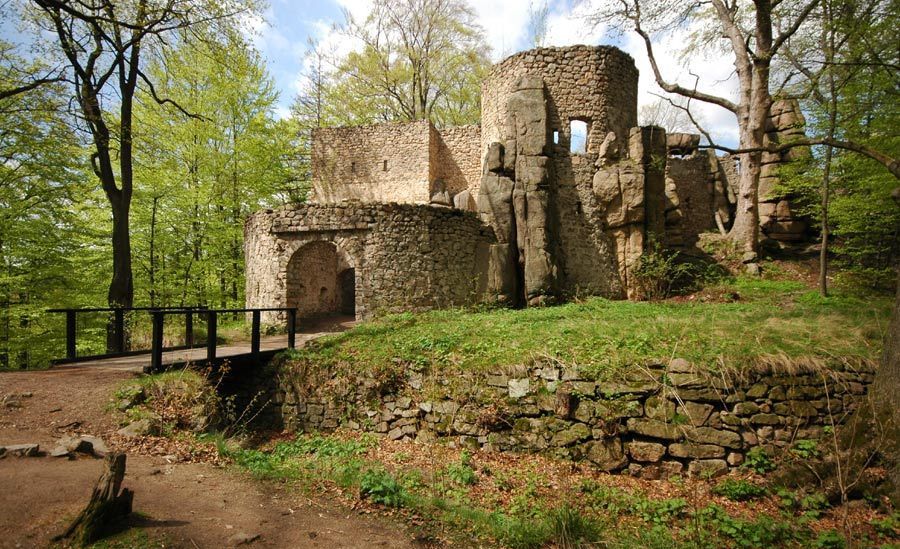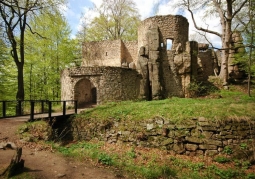Bolczów Castle - Janowice Wielkie - Rudawski Landscape Park
No weather data
0.0 /5
Number of ratings: 0
The creation of the castle in 1375 is attributed to the courtier of Prince Bolko II of the Bolczów family. In the first half of the 15th century, townspeople with the Hussites destroyed during the battle of Wrocław and Świdnica. After the war damage, the castle was not rebuilt until 1517-1518, probably by Hans Dippold von Burghaus. A courtyard was built then, and a defensive tower was erected in the southern corner, and a number of shooting ranges were placed within the walls. The castle changed owners successively - in the years 1537-1543 it belonged to Justus Decius from Kraków, a courtier and secretary of the Polish king Zygmunt Stary. In the years 1520-1550 the castle was expanded again, among others, a gate tower was erected, erected in front of the gate tower, a stone wall was built, and a dry moat was built, the walls were also adapted to artillery weapons by making key shooting ranges. Work continued until 1550. In 1562, the castle, together with Janowice and Miedzianka, became the property of the brothers Hans and Franz Heilmann. Probably at the beginning of the 17th century, Daniel Schaffgotsch, the then owner of Janowice, commissioned further work at the castle. Further transformations took place as a result of the Thirty Years' War. In 1645 it was taken by the Swedes, who, leaving the castle in December this year set fire to the residential buildings. Bolczów has remained in ruins since then. Interest in tourism in the mid-nineteenth century meant that the castle on the initiative of Count Stolberg-Wernigerode was subjected to reconstruction in 1848, it housed a small inn built on old Swiss-style foundations. After the war, the inn building housed a tourist hostel, which in time was devastated. Currently, the castle is the property of the State Forests, put into use by the Association "Municipal Residents" from Mniszków. The castle is part of the Jeleniogórska Valley Cultural Park established in 2008.
Komentarze
No results
Nearby places
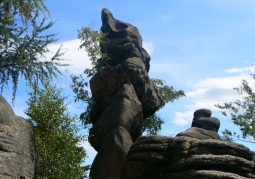
Starościńskie Rocks - Rudawski Landscape Park
Category: Caves and rock formsA group of characteristic rock forms located in the Rudawski Landscape Park in the Rudawy Janowickie band. A picturesque set of rocks, over 20 m high, built of Vistula Karkonosze granite, with aplite veins, creates a...
2 km
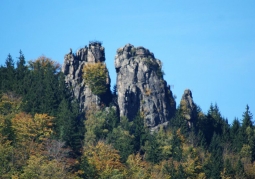
Sokolik - Rudawski Landscape Park
Category: LookoutsSokolik Duży (stands at an altitude of 620m) with a viewing platform rising to a height of about 30 m and Sokolik Mały (stands at an altitude of 610-615m). With iron stairs we can get to the top of this magnificent...
4 km

Sokolik - Rudawski Landscape Park
Category: Peaks and valleysSokolik - a viewpoint in Rudawy Janowickie. An hour after sunrise, the "laser" magic begins. A place to which we will get, among others, along the red trail from the Szwarka hostel.
4 km
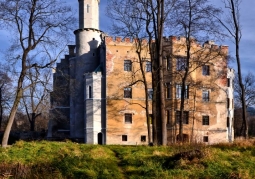
Fischbach Castle - Karpniki
Category: LocksThe castle was built in the fourteenth century, probably by Henry Czirn, the owner of Płonina and Sokolec. In the following centuries, the castle was rebuilt several times, and its current appearance dates from 1846...
5 km
Nearby places

Starościńskie Rocks - Rudawski Landscape Park
Category: Caves and rock formsA group of characteristic rock forms located in the Rudawski Landscape Park in the Rudawy Janowickie band. A picturesque set of rocks, over 20 m high, built of Vistula Karkonosze granite, with aplite veins, creates a...
2 km

Sokolik - Rudawski Landscape Park
Category: LookoutsSokolik Duży (stands at an altitude of 620m) with a viewing platform rising to a height of about 30 m and Sokolik Mały (stands at an altitude of 610-615m). With iron stairs we can get to the top of this magnificent...
4 km

Sokolik - Rudawski Landscape Park
Category: Peaks and valleysSokolik - a viewpoint in Rudawy Janowickie. An hour after sunrise, the "laser" magic begins. A place to which we will get, among others, along the red trail from the Szwarka hostel.
4 km

Fischbach Castle - Karpniki
Category: LocksThe castle was built in the fourteenth century, probably by Henry Czirn, the owner of Płonina and Sokolec. In the following centuries, the castle was rebuilt several times, and its current appearance dates from 1846...
5 km
